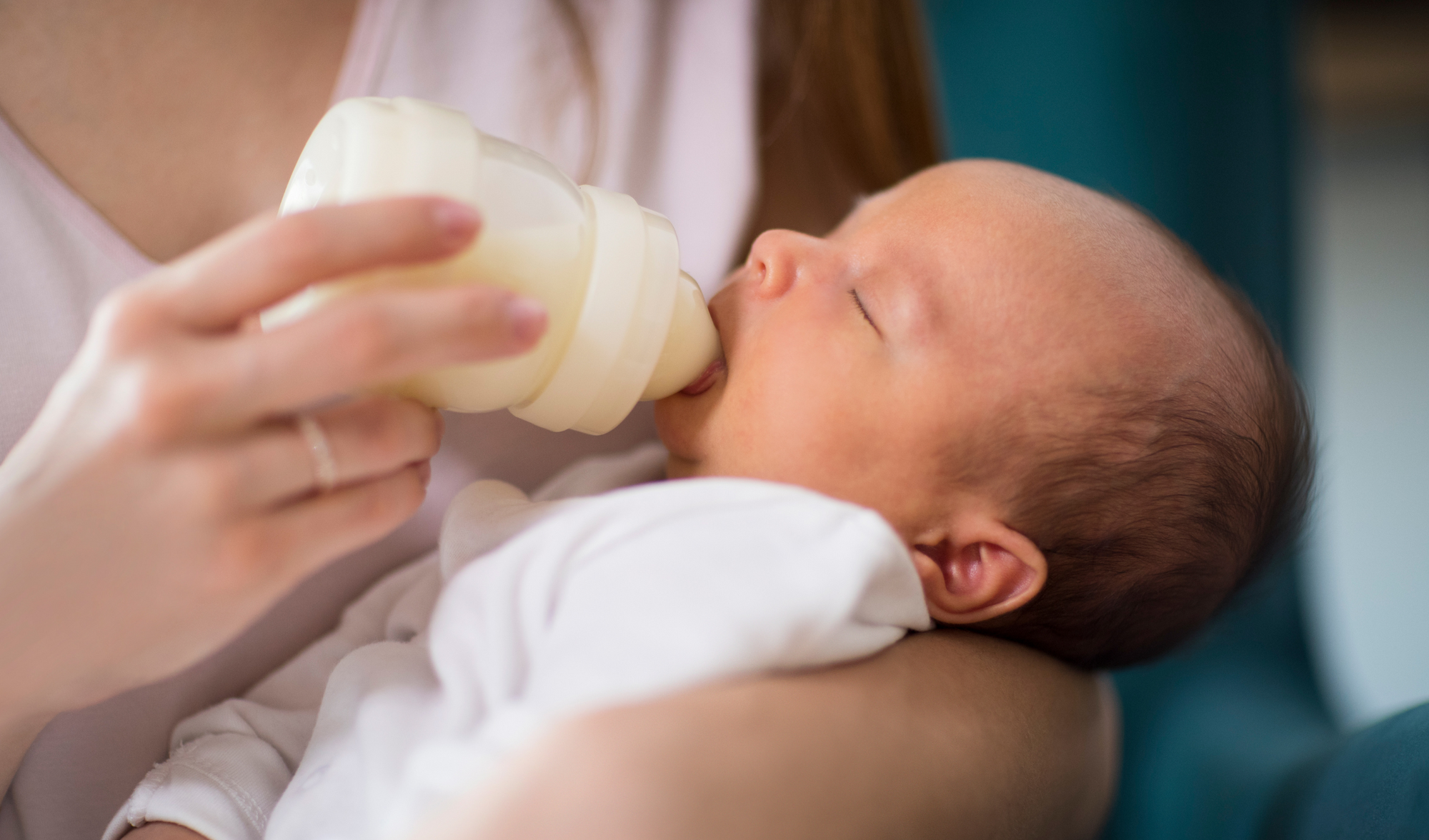While there is no doubt that nursing is the best way to feed your baby, some new moms use a bottle for a variety of reasons. Whether you are pumping your own breast milk or feeding your baby formula, a bottle is a must-have baby item. Here are some aspects to consider while selecting the best bottle for your newborn. Continue reading for tips on choosing newborn baby bottles from real moms and experts.

Newborn Bottle Features to Know
Before you go shopping, it's a good idea to know what kinds of bottles and bottle accessories are available for your baby. Here are some major distinctions to be aware of.
Types of baby bottle nipples
Nipples are typically included with baby bottles, but they may also be purchased independently and are available in a range of shapes and styles, which is especially beneficial for newborns with special feeding needs. Let’s take a look at the differences.
Nipples are classified according to their flow rate; the slowest nipples are typically made for newborn babies and are classified as level one. When you notice your baby sucking aggressively or seeming frustrated when feeding, it’s time to replace nipples with the next level. (If there is a lot of milk flow, you may require a lower nipple size.) Replace nipples as well if they are broken, discolored, or thinning.
Parents can also select the nipple material: silicone is strong and robust, whereas latex is softer and does not last as long. It should be noted that some babies are allergic to latex.
Try a few different nipple sizes and types to see what works best with your baby. Below are different types of nipples.
Traditional nipples: These are the bell-shaped, usually latex nipples that come with most baby bottles.
Orthodontic nipples: Designed to protect baby’s palate, these nipples have a bulbous top and flatter base.
Flat-topped nipples: Shaped more like the breast, these have a bigger base bulb and a flatter top.
Anti-vacuum nipples: Designed to prevent colic and gassiness by limiting the amount of air your baby takes in.
Multi-flow nipples: These are designed to be able to provide multiple stage flows (Stage 1 and 2, for example) in the same nipple. Adjust the positioning of the nipple to control the flow.
Disposable nipples: Sterile, individually wrapped nipples that come in handy for easy clean up, but must be tossed after a single use.

The shape of baby bottles
Some bottles are straight, while others are tilted (so baby doesn't swallow air) or wide (which mimics breastfeeding to reduce nipple confusion). A wider necked bottle is easier to clean.
Bottles with features that reduce air bubbles, such as drop-in inserts, vents, or an angled top can control how much air your baby takes in. This may minimize gas and spit-up, which can help lessen fussiness. Venting bottles may be very beneficial for newborns suffering from colic.
What materials are there?
Baby bottles are available in a variety of materials, including plastic, glass, silicone, and stainless steel. Each has its own set of pros and downsides.
Plastic: Plastic bottles are shatterproof and lightweight, but they must be replaced more frequently than other types. Plastic bottles are usually regarded as safe nowadays, while older secondhand versions may contain bisphenol A (BPA), which the Food and Drug Administration (FDA) has prohibited from being used in baby bottles. However, according to the American Academy of Pediatrics (AAP), we can't be certain about the health and safety of plastics for children, especially when heated in the microwave or dishwasher.
Glass: Some parents choose glass bottles because of their durability, but they are also heavier, more expensive, and more likely to break. You can buy silicone sleeves to keep the glass bottle from shattering if it is dropped.
Silicone: Food-grade silicone bottles are lightweight, flexible, and BPA-free. They are more difficult to find and more expensive than other possibilities.
Stainless Steel: Although these bottles are long-lasting and free of contaminants, they are expensive. Another disadvantage is that you can't see inside a stainless steel bottle, making it difficult to determine how much milk your baby has consumed.
Disposable Liners: Some bottles have sterilized plastic liners that are discarded after each use. Disposable bottle liners are convenient for cleaning, but they are expensive and harmful to the environment.

What size of baby bottle do I need?
Baby bottles come in a variety of sizes and shapes. Newborns only consume a few ounces at a time, so smaller is preferable in the beginning but because newborns grow quickly, opting straight for the larger bottles may save you money in the long term.
Baby will go to a faster-flowing Stage 2 nipple and an 8-ounce or bigger bottle as they develop, drinking more milk at less frequent feedings.
Additional Top Tips
If you intend to pump, plan beforehand. Here's an insider tip for pumping moms: Buy bottles that are the same brand as your breast pump. "You can then express your milk directly into the bottle you'll be using later."
Purchase new bottles for each baby. If this is your second (or third, or fourth) child, you should buy fresh bottles for them. Older, used items may no longer fulfill contemporary safety or environmental regulations; for example, certain older plastic bottles may contain BPA. And always purchase new nipples!
Preparing a Newborn Bottle for Feeding
Congratulations on finding a newborn bottle that works for your baby! It's now time to tidy it up before the first feeding. "Before the first usage, sterilize fresh parts and nipples in boiling water for five minutes," Dr. Landau advises. Following that, a thorough wash in hot, soapy water is sufficient. Use a bottle brush to get into all the nooks and crannies. Cleaning bottles in the dishwasher is also an option. The bottles and all of their components should then be fully air-dried. (A bottle drying rack comes in handy.) You mustn't store parts until they are totally dry, you can air dry them on a clean cloth or dry them with a soft cloth or paper towel first.


